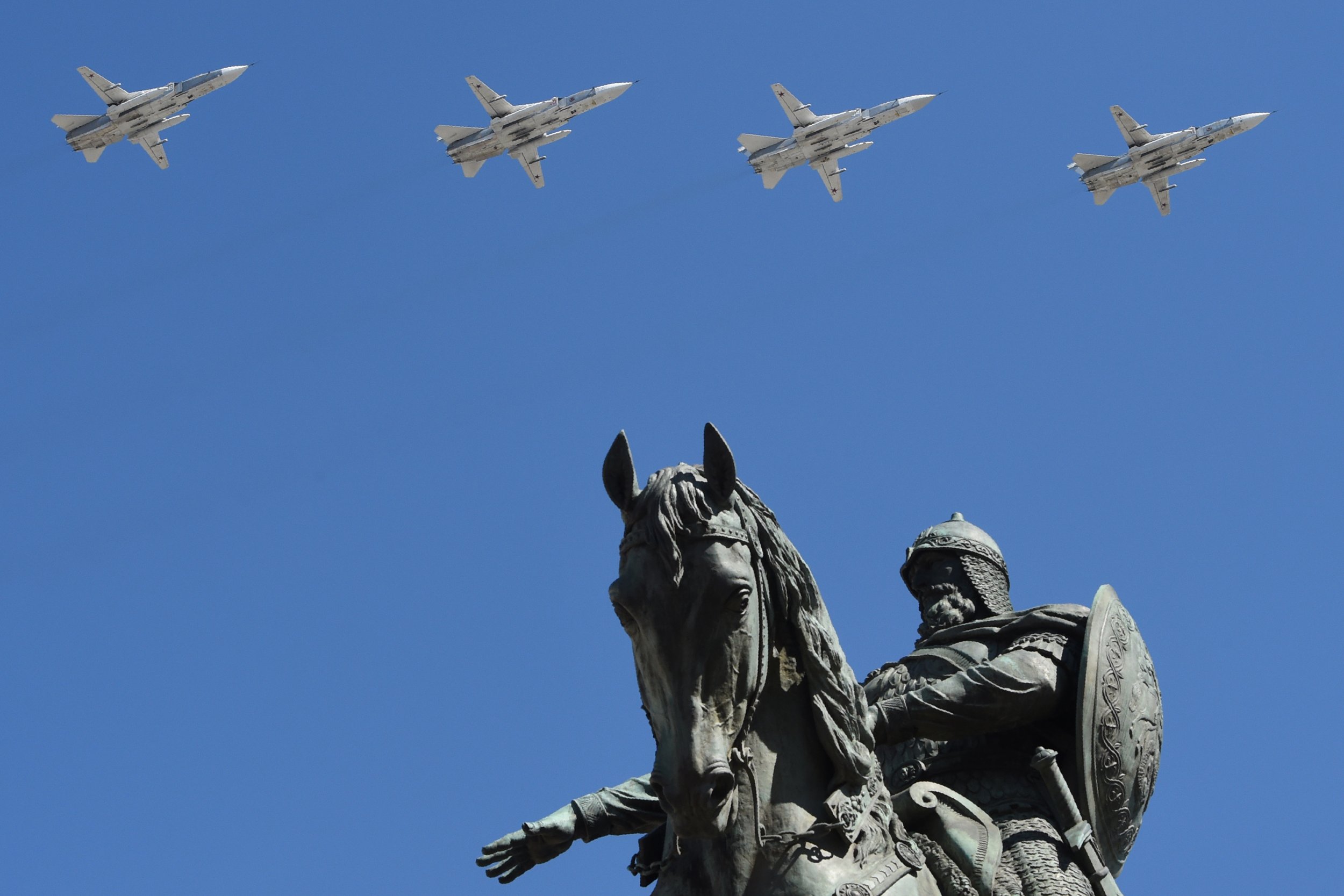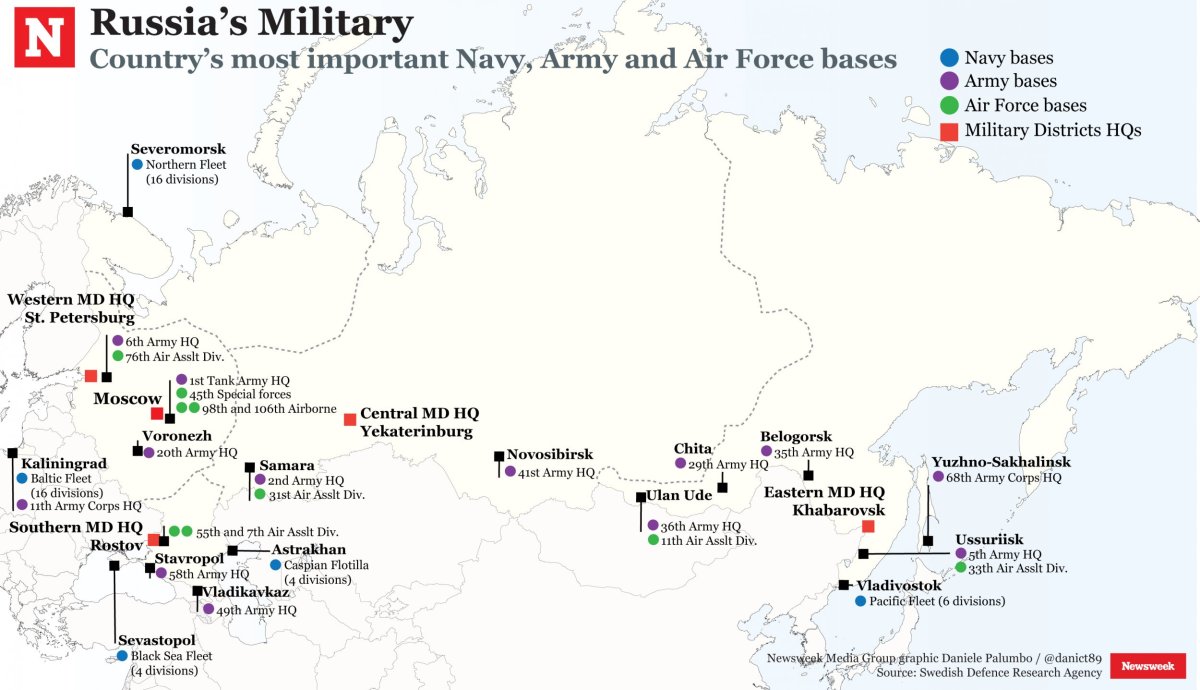
Russian military jets have been taking each other on in a drill chase at supersonic speeds near the country's Pacific coastline, it was announced Tuesday.
The Russian Pacific Fleet has been practicing for a rapid enemy incursion. The fleet's airmen flew off into the Earth's stratosphere for the high-speed race, in which one of them played a would-be intruder, while the other was tasked with preventing entry into national airspace, without invoking the support of ground-based arms, state news agency Itar-Tass reported.
The Russian armed forces have carried out a series of drills in its eastern regions, after wrapping up a massive wargame, focusing on an imagined attack from the west in September. Multiple branches of the military have specifically been called to practice operations near the country's small border with North Korea, whose ongoing nuclear program has elevated tensions with the U.S. exponentially over the last year.
Related: Russia launches live-fire air-combat drill near North Korea border
"A MiG-31 interceptor-fighter jet took the role of the intruder, flying at an altitude of 20 kilometers (12 miles)," Nikolay Voskresenskiy, spokesman of the fleet, told Tass. "The crew of the 'intruder' had the task of going full speed into Russian airspace, reach a determined boundary and avoid a possible chase."
The Cold War-era jet, designed by the Mikoyan company and codenamed Foxhound by NATO, is one Moscow has almost exclusively reserved for territorial defense. Its acceleration and interception abilities are designed with the task of repelling high-altitude intruders and spy planes. The drill simulated such an encounter, with Pacific forces in the Kamchatka peninsula, which splits the Sea of Okhotsk, north of Japan and the Bering Sea, west of Alaska.

Hot on the incoming jet's heels but without prior knowledge of where the assailant would prod Russian airspace from, another MiG-31 scrambled from Kamchatka region's Elizovo airbase, in pursuit. Its own task would be to find, block and, if necessary, "destroy" the simulated enemy, without the use of surface-to-air weapons.
The crew of the fighter reached a speed of over 1,367 miles per hour and located the mock intruder at an altitude of nearly nine miles. Its arrest of the enemy MiG-31 ended in success, Voskresenskiy said, as it simulated fire on the enemy from over 60 miles away, registering a hit despite the target's anti-missile maneuvers. The launches involved electronic signaling in the place of live ammunition.
Uncommon Knowledge
Newsweek is committed to challenging conventional wisdom and finding connections in the search for common ground.
Newsweek is committed to challenging conventional wisdom and finding connections in the search for common ground.
About the writer
I am a Staff Writer for Newsweek's international desk. I report on current events in Russia, the former Soviet Union ... Read more
To read how Newsweek uses AI as a newsroom tool, Click here.








